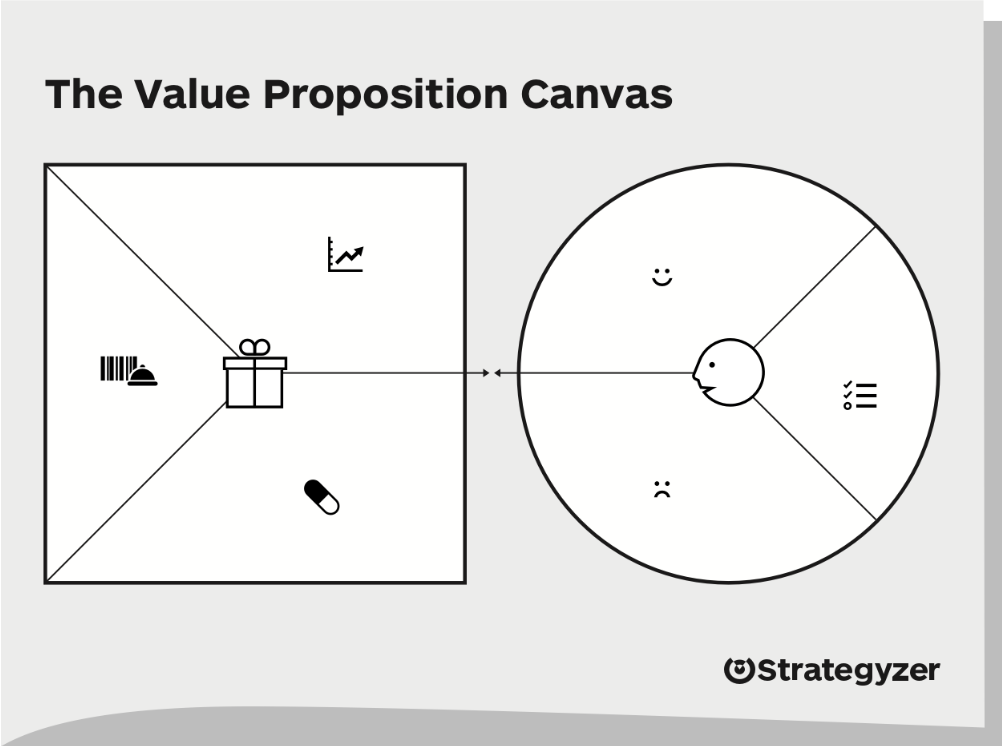Do your customers understand how your business adds value and solves their problems?

Whether you’re a start-up launching a new data platform, or an established consultancy building a new market position, a clearly stated value proposition is an important way to guide sales, marketing, and product development.
According to Shopify, a value proposition is a ‘simple statement that clearly communicates the product or service benefit you promise to deliver to your customers’. Here’s how to develop yours:
- Download Strategyzer’s value proposition canvas.
- Identify the buyer you are focusing on, e.g. Finance Directors of SMEs.
- On the right-hand side, note the jobs-to-be-done for your buyer associated with the domain you address. These are tasks your user must do to be effective (everything from technical stuff like producing forecasts to presenting to the board).
- Note the pains and gains associated with doing each job. A pain is a negative outcome or obstacle associated with the job, like time consuming data collection. A gain might be something like ‘looking good by providing accurate forecasts to the board’.
- On the left-hand side note the tasks your service performs, and how you relieve pains whilst achieving gains, in ways that your customer both expects – and might not expect.
- Then create ‘fit’ by making connections between how your product eases pains, creates gains, and performs the jobs your buyer cares about. Focus on those you excel at.
- Keep iterating based on how buyers respond to your marketing and sales activities.
Found this Little Missions interesting?
Subscribe to get Little Missions delivered straight to your inbox.




